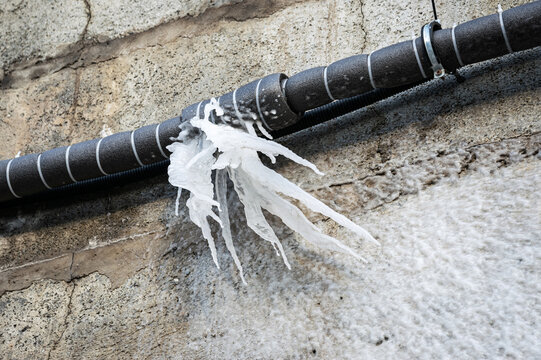Ways to Safeguard Your Pipes from Freezing: Expert Tips
Ways to Safeguard Your Pipes from Freezing: Expert Tips
Blog Article
Have you been trying to find facts and techniques on Helpful Tips to Prevent Frozen Pipes this Winter?

Winter can damage your pipes, particularly by freezing pipelines. Here's exactly how to prevent it from happening and what to do if it does.
Intro
As temperature levels drop, the threat of frozen pipes increases, possibly leading to pricey repairs and water damages. Understanding just how to avoid frozen pipelines is crucial for house owners in cool environments.
Understanding Frozen Pipelines
What triggers pipes to freeze?
Pipelines ice up when revealed to temperature levels below 32 ° F (0 ° C) for extended durations. As water inside the pipes ices up, it broadens, taxing the pipe walls and potentially creating them to burst.
Threats and problems
Frozen pipes can bring about supply of water disturbances, building damage, and pricey repair services. Ruptured pipelines can flooding homes and create extensive architectural damages.
Signs of Frozen Water Lines
Determining frozen pipelines early can avoid them from bursting.
How to recognize frozen pipelines
Search for lowered water flow from taps, uncommon smells or sounds from pipelines, and visible frost on subjected pipelines.
Avoidance Tips
Insulating at risk pipelines
Cover pipelines in insulation sleeves or use warmth tape to shield them from freezing temperatures. Concentrate on pipes in unheated or outside areas of the home.
Home heating techniques
Keep indoor rooms properly warmed, specifically areas with plumbing. Open closet doors to allow cozy air to distribute around pipelines under sinks.
Safeguarding Outdoor Pipes
Garden hoses and outdoor taps
Disconnect and drain garden pipes prior to winter months. Set up frost-proof faucets or cover exterior faucets with protected caps.
What to Do If Your Pipes Freeze
Immediate activities to take
If you believe frozen pipelines, keep faucets available to relieve stress as the ice thaws. Make use of a hairdryer or towels taken in warm water to thaw pipelines gradually.
Long-Term Solutions
Architectural changes
Consider rerouting pipes far from outside walls or unheated areas. Add additional insulation to attics, basements, and crawl spaces.
Updating insulation
Purchase top notch insulation for pipelines, attic rooms, and wall surfaces. Appropriate insulation helps keep consistent temperature levels and decreases the threat of icy pipelines.
Final thought
Preventing icy pipelines requires proactive steps and fast feedbacks. By understanding the reasons, indications, and preventive measures, house owners can secure their plumbing during cold weather.
5 Ways to Prevent Frozen Pipes
Drain Outdoor Faucets and Disconnect Hoses
First, close the shut-off valve that controls the flow of water in the pipe to your outdoor faucet. Then, head outside to disconnect and drain your hose and open the outdoor faucet to allow the water to completely drain out of the line. Turn off the faucet when done. Finally, head back to the shut-off valve and drain the remaining water inside the pipe into a bucket or container. Additionally, if you have a home irrigation system, you should consider hiring an expert to clear the system of water each year.
Insulate Pipes
One of the best and most cost-effective methods for preventing frozen water pipes is to wrap your pipes with insulation. This is especially important for areas in your home that aren’t exposed to heat, such as an attic. We suggest using foam sleeves, which can typically be found at your local hardware store.
Keep Heat Running at 65
Your pipes are located inside your walls, and the temperature there is much colder than the rest of the house. To prevent your pipes from freezing, The Insurance Information Institute suggests that you keep your home heated to at least 65 degrees, even when traveling. You may want to invest in smart devices that can keep an eye on the temperature in your home while you’re away.
Leave Water Dripping
Moving water — even a small trickle — can prevent ice from forming inside your pipes. When freezing temps are imminent, start a drip of water from all faucets that serve exposed pipes. Leaving a few faucets running will also help relieve pressure inside the pipes and help prevent a rupture if the water inside freezes.
Open Cupboard Doors
Warm your kitchen and bathroom pipes by opening cupboards and vanities. You should also leave your interior doors ajar to help warm air circulate evenly throughout your home.

As a passionate person who reads about Winter Plumbing Precautions: Preventing Frozen Pipes, I thought sharing that topic was worthwhile. In case you appreciated our blog post kindly make sure you remember to pass it around. Thanks a bunch for being here. Don't forget to stop by our website back soon.
Click For More Information Report this page